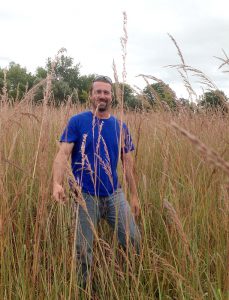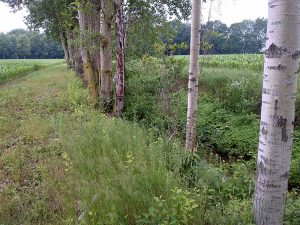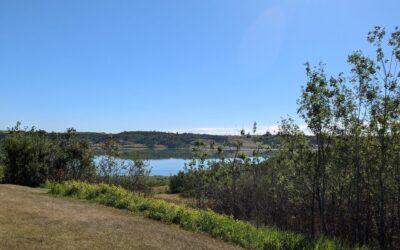
Greg stands in a three-acre field seeded with a diverse mix of native tallgrass prairie plants. This field was too small to efficiently farm.
In 2012, ALUS Norfolk participants Greg and Jeff Vermeersch established an eight-foot wide native tallgrass prairie buffer zone surrounding some corn fields on Van Meer Farms, an 8,000-acre field corn and soybean operation in Norfolk County, Ontario.
Through yield monitors on their combines, the brothers were aware of little economic benefit in the first eight or 10 feet on the edges of their cash crop fields, due in part to shade from adjacent woods and crop damage by wildlife.
By devoting this area to tallgrass prairie instead, they are now producing ecological benefits for the farm, their neighbours and the public.
They also seeded a three-acre field, too small to efficiently farm, with a diverse mix of native tallgrass prairie, and established a tallgrass buffer on either side of steep drainage ditches.
The deep roots of the warm-season grasses help to reduce erosion on rills and gullies through surface runoff into drainage ditches and ponds, thereby helping to protect local water quality.
For the first year or two after seeding, mowing the grass at a height of eight inches cuts off seed heads on weeds and helps the grasses get established.
The buffer improves access to the farmers for crop tours and to consulting agronomists for sampling, while providing habitat for pollinators and other wildlife, cleaner water and cleaner air.

ALUS Norfolk participant Greg Vermeersch and ALUS coordinator Denika Piggott with an 8-foot wide native grass buffer that surrounds a corn field.

A recently mowed grass buffer on either side of a steep drainage ditch. Mowing the newly established grass at a height of eight inches cuts off weed seed heads and helps the grass get established in the first year or two after seeding.



